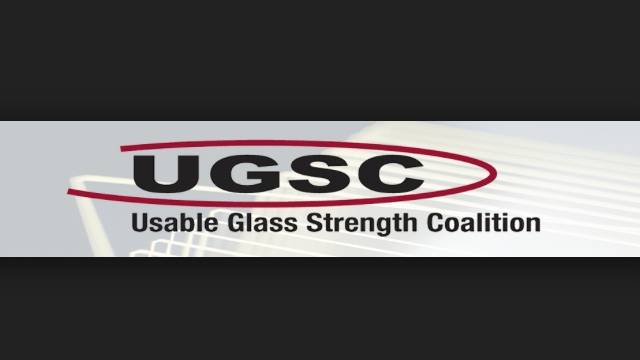The Usable Glass Strength Coalition (UGSC) has announced the award of $80,000 for a grant to Colorado School of Mines (CSM), Golden, Colorado, to carry out research that aims to improve the understanding of manufactured glass products’ strength properties.
“I am excited about the Usable Glass Strength Coalition’s recent award of a research contact with The Colorado School of Mines. This is our second contract that meets the UGSC’s mission for industry coalition funding of fundamental, academic-based research into the mechanisms for glass’ loss of intrinsic strength through interaction with environmental exposure of pristine surfaces. CSM’s proposal was selected after careful review and consideration of 13 submitted proposals and builds on our current and continuing funding of research conducted at Pennsylvania State University. I encourage other glass industry manufacturers and suppliers to join the UGSC and help us expand our fundamental knowledge of glass surfaces and interactions with the environment that leads to loss in strength,” said Jeff Shock, UGSC Board Chairman and Research & Development Platform Leader of Glass Technology at Johns Manville.
The research, Fundamental Understanding of Strength Limiting Flaws in Multi-Component Glass, will be led by principle investigator, Ivar Reimanis, Herman F. Coors Distinguished Professor of Ceramic Engineering, Director, Colorado Center for Advanced Ceramics, Professor, Metallurgical and Materials Engineering.
“The opportunity to apply the most modern, atomistic-level tools to examine strength-limiting flaws in glass is truly inspiring, and we at Mines are looking forward to making an impact,” said Dr. Reimanis.
A flaw that dictates fracture in glass may have many attributes that are not included in a standard fracture mechanics approach to predict failure. This is particularly true for high strength glasses where flaw nucleation is at the atomic or nanometer scale or depends on processes at the atomic or nano length scale. At these scales chemical inhomogeneity is significant and environmental interactions in relation to the formation of a strength limiting flaw are not well-understood. The present proposal seeks to understand the nature of these flaws in relation to the nucleation of cracks, and their formation during processing or handling in specific situations such as in the container and fiber industries. A combination of fracture testing, nano-scale characterization and modeling will be employed to describe how cracks nucleate. Modern analytic instrumentation, including focused ion beam (FIB) sectioning, atom probe tomography (APT), and state-of-the-art electron microscopy will be employed to enable previously unachievable levels of resolution and analytical information.
Research commences in October, 2016, with initial funding for one year. The research project will run concurrently with UGSC’s current research project with Pennsylvania State University, Controlling and understanding reactive surface sites on multicomponent glasses, which has been renewed for its fourth year. “Research, such as this with the Colorado School of Mines is essential. Although a ubiquitous and extremely versatile material, it is well known that glass is subject to fundamental flaws, it fractures, and to make it strong enough to use, it is heavy. If we could understand why glass factures and thus create new manufacturing processes that lightweights glass products and creates a glass that is tens or hundreds of times stronger in use, it would revolutionize the use of glass as a material and have a huge impact on sustainability objectives,” said Robert Weisenburger Lipetz, Secretary of the UGSC and Executive Director of the Glass Manufacturing Industry Council (GMIC).
Under the auspices of the GMIC, the UGSC is a cross industry coalition that serves a mission to advance, develop and promote fundamental, precompetitive research applicable to increasing the strength of glass across all glass sectors (container, flat, specialty, fiber, etc.); to provide an opportunity for glass researchers to develop expertise in areas suitable for industrial applications, and to develop tools and measurement techniques for the advancement of glass science. The Coalition collaboratively funds and guides a research program to allow development and commercialization activities outside the Coalition and apart from the individual participants.
The UGSC presents an opportunity for companies that participate in the glass industry, to share costs and the potential benefits of fundamental research into usable glass strength, without breaking their research budgets. The philosophy of the Coalition is to place research results in the public domain and not to seek patent protection. However, Coalition participants have the benefit of having access to the research results prior to the results being made public.
The Usable Glass Strength Coalition is currently accepting additional participants. Interested parties should contact Chairman of the Board, Jeff Shock, PhD, R&D Platform Leader: Glass Technology at (303) 978-3825, shockj@JM.com, or UGSC Secretary and Administrator, Robert Weisenburger Lipetz, MBA, at (614) 818-9423, rwlipetz@gmic.org.




